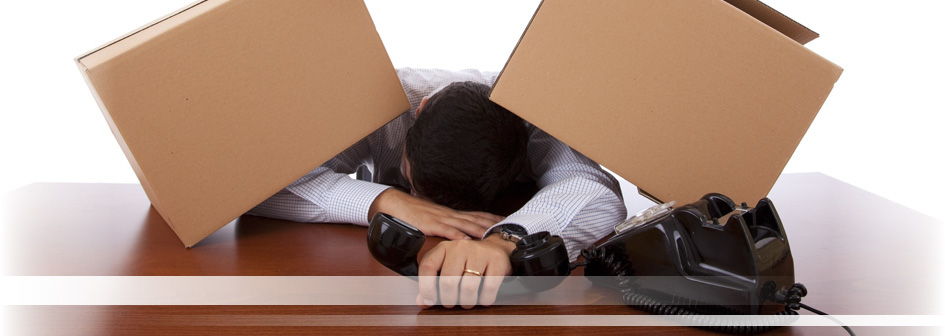Preserve Sofa Elegance: Expert-Recommended Storage Ways
Posted on 17/05/2025
Preserve Sofa Elegance: Expert-Recommended Storage Ways
Sofas are a centerpiece in most living rooms and lounges, offering comfort, style, and an inviting ambiance. However, when it comes to storage--be it for relocation, home renovations, or seasonal changes--protecting the elegance and longevity of your sofa becomes paramount. Preserving sofa elegance through expert-recommended storage solutions ensures your investment remains spotless, undamaged, and ready for use whenever needed. In this comprehensive guide, we'll explore smart storage methods, top furniture care tips, and actionable hacks to maintain your sofa's pristine condition.

Why Is Proper Sofa Storage Crucial?
Sofas, regardless of their make--be it fabric, leather, or synthetic blends--can easily suffer from dust, pests, moisture, and deformation if not stored correctly. Proper storage methods for sofas not only guard against these threats but also help preserve the original color, texture, and structure of your beloved furniture. Whether you're storing your sectional for a month or a year, expert-recommended practices prevent unnecessary wear and ensure your sofa looks as elegant as the day you bought it.
Key Damages Caused By Improper Sofa Storage
- Fading: Sunlight and temperature fluctuations can cause upholstery colors to fade.
- Mold & Mildew: Poor ventilation and humidity lead to fungal growth, particularly on fabric sofas.
- Pest Infestation: Rodents and insects are attracted to hidden, undisturbed furniture.
- Physical Warping: Incorrect stacking or placing causes misshaping over time.
- Dust Accumulation: Fine particles weaken fibers and can stain materials.
Before Storage: Prepare Your Sofa for Elegance Preservation
Preparation is the backbone of maintaining sofa elegance during storage. Here's how to prime your couch for stowing away, minimizing any risk of damage:
1. Deep Clean the Sofa
- Vacuum thoroughly: Use an upholstery attachment to pick up dust, crumbs, and debris, getting into crevices and under cushions.
- Cushion & cover care: If your sofa has removable covers, wash or dry-clean them according to the manufacturer's instructions.
- Spot clean stains: Employ suitable cleaning products for fabric, leather, or synthetic upholstery. Address greasy stains, ink, or pet marks before storage.
- Leather sofas: Use a dedicated conditioner after cleaning to keep the leather supple and resistant to cracking during storage.
2. Disassemble When Possible
If feasible, disassembling your sofa (removing legs, arms, or sectional pieces) allows for safer, space-saving storage. Wrap individual parts in protective material to avoid nicks and scratches. Store small hardware in labeled bags attached to main components.
3. Air Dry Completely
Ensure your sofa is entirely dry before storage. Even slight moisture can foster mold, mildew, or odors. Allow fabric and cushioning to air out for several hours after cleaning.
Choosing the Right Environment for Storing Sofas
A crucial aspect of elegant sofa storage is the environment in which you store your furniture. Experts emphasize that temperature and humidity are the main factors determining your sofa's future condition.
Climate-Controlled Storage Facilities
A climate-controlled unit protects against temperature swings and excess humidity, both leading causes of sofa damage. These facilities are ideal for expensive or antique couches, leather sofas, or long-term storage needs.
- Maintains optimal temperature (usually 55-80?F or 13-27?C)
- Keeps humidity below 50%
- Prevents formation of mold, mildew, and cracking
- Minimizes pest infestations
At-Home Storage Solutions
If you lack access to a climate-controlled facility, choose an indoor area like a dry basement, guest room, or insulated garage. Avoid attics or uninsulated sheds where temperatures and humidity fluctuate drastically.
- Install dehumidifiers in damp climates
- Avoid direct sunlight exposure
- Elevate sofa off the ground to prevent ground moisture
The Best Expert-Recommended Ways to Store Your Sofa Safely
1. Cover Your Sofa with Breathable Materials
Sealing your couch in non-breathable plastic traps humidity, potentially leading to musty odors and mildew. Instead, choose breathable protective covers:
- Cotton drop cloths
- Moving blankets
- Specialized furniture covers with ventilation
*If using plastic wraps for short-term storage or moving, be sure to cut ventilation holes and remove as soon as possible.*
2. Elevate the Sofa
Never rest your sofa directly on the floor--especially in non-climate-controlled settings. Use wooden pallets, blocks, or risers. This creates air circulation and safeguards against leaks, floods, or condensation pooling.
3. Avoid Stacking Heavy Items On Top
A common mistake during storage is using sofas as makeshift shelves. Do not stack heavy items (boxes, suitcases, etc.) on your couch. This can compress cushions, deform the frame, and permanently alter the alignment of springs and supports.
4. Position the Sofa Upright
If space permits, store the sofa in its natural sitting position for optimal shape retention. For larger sectionals or space constraint situations, stand pieces on their ends carefully, ensuring there is enough support and no undue pressure on arms or backs.
5. Protect Sofa Legs and Arms
- Wrap legs and arms individually in moving blankets or foam padding.
- Secure padding with gentle, non-adhesive tape that won't leave marks.
6. Use Pest Control Precautions
- Set up natural repellents--like cedar sachets, lavender pouches, or silica gel packets--inside and around your wrapped sofa.
- Steer clear of harsh chemical repellents that could stain or damage fabrics.
Seasonal Storage: Protecting Sofa Elegance Year-Round
When storing your sofa for only a part of the year (for example, an outdoor couch brought inside for winter), tailor your preservation efforts to the season.
Winter Storage Tips
- Wipe down and dry completely to prevent freeze-thaw moisture problems
- Cover with thermal blankets for added temperature insulation
- Never leave in non-insulated garages or sheds prone to severe cold
Summer Storage Tips
- Ensure good ventilation to counteract humidity
- Protect against direct sunlight which accelerates fading
- Check periodically for pest activity
Special Considerations for Leather Sofas
Leather sofas are prized for their sophisticated appearance, but they are particularly susceptible to environmental damage during storage. For preserving leather sofa elegance while in storage, follow these tips:
1. Condition Before Storage
Generously apply a reputable leather conditioner, massaging it into all exposed surfaces. This keeps leather supple and shields against cracking in dry environments.
2. Avoid Contact with Hard or Sharp Objects
Even minor abrasions can permanently mar leather. Always encase leather sofas with thick moving blankets or bubble wrap on all vulnerable surfaces.
3. Maintain Air Flow
Never seal a leather sofa tightly in plastic or non-breathable covers, as trapped humidity can cause mold and finish breakdown. Opt for cotton or canvas coverings that allow for slow, natural air exchange.
Best Practices for Long-Term Sofa Storage
If your sofa will be stored for six months or more, implement these best practices to keep your sofa elegant in storage:
- Periodic Inspection: Every 1-2 months, briefly inspect your sofa for signs of pests, mold, or unusual odors.
- Shift Position Slightly: Gently move or adjust the sofa every so often to prevent pressure spots on the frame or upholstery.
- Maintain Low Humidity: Place moisture absorbers (like silica gel or dedicated dehumidifiers) in the storage area.
- Keep It Clean: Dust off the cover and check for accumulating dust beneath and around the sofa.
Moving Your Sofa Into (and Out of) Storage
The transition process--either into storage or back into your living space--can make or break your sofa's appearance. To uphold sofa storage elegance throughout:
- Use teams or moving straps to prevent accidental drops and bumps
- Store upright and avoid dragging on floors, which can rip legs or fabric
- Unpack and air out the sofa after removal from storage before use
- Vacuum and re-clean to remove storage residue or repositioned pests
How to Restore Your Sofa After Storage
If your sofa emerges from storage a little worse for wear, address issues right away to return its lost glory:
- Musty Odors: Sprinkle baking soda, let sit for a few hours, then vacuum thoroughly.
- Fabric Indentations or Creasing: Use a steamer or gently iron on low heat with a protective cloth.
- Leather Cracking: Deep clean and apply two coats of leather conditioner, buffing well.
- Minor Pest Evidence: Vacuum aggressively and disinfect. Consider professional cleaning for major infestations.
Expert Maintenance Tips for Sofa Longevity (Even While in Storage)
- Rotate Usage: If storing multiple pieces, rotate cushions or entire sofas occasionally to distribute pressure.
- Monitor Environmental Controls: Set reminders to check temperature and humidity in your storage space regularly.
- Quick Repairs: Patch small tears and fix loose screws or legs promptly before they worsen in storage conditions.
- Carefully Label Storage Areas: Prevent stacking accidents and make retrieval easier by clearly labeling your sofa and its parts.

Frequently Asked Questions About Sofa Storage Elegance
Can I store my sofa in a garage?
While garages can work for short-term storage, temperature swings and high humidity can cause lasting damage. Elevate your sofa, use covers, and consider adding a dehumidifier if your only option is the garage.
How can I prevent my sofa from smelling musty after storage?
Store your sofa clean, thoroughly dry, and with moisture absorbers like silica gel, baking soda sachets, or activated charcoal nearby.
Is it necessary to disassemble my sofa for storage?
Disassembling reduces wear on stress joints and makes storage or transport safer. If possible, remove legs, cushions, and arms to preserve sofa integrity.
What should I avoid when covering my sofa in storage?
Avoid plastic wraps for long-term storage, as they trap moisture and promote mildew. Opt for breathable cotton or canvas covers instead.
Conclusion: Let Storage Be an Asset, Not a Threat, to Sofa Elegance
A well-preserved sofa is more than just furniture--it's the keeper of memories, comfort, and home style. By following expert-recommended storage ways for preserving sofa elegance, you ensure your piece remains beautiful and service-ready, whether stored for a season or years. Preparation, climate control, proper covering, and regular monitoring are the pillars of luxurious sofa care during storage.
Remember, investing a little time now will pay dividends in restoration, comfort, and continued aesthetic allure for years to come. Store smart, and let your sofa's elegance endure--no matter where life takes you.








